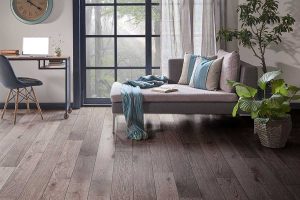Buying new wood floors is a big decision that affects your home’s appearance, comfort, and value. While wood flooring can completely transform a space, the process of choosing and buying it comes with plenty of potential pitfalls. From picking the wrong material to ignoring lifestyle factors, homeowners often make the same mistakes—and these can be costly. This guide walks you through the key things to look out for so you can feel confident when upgrading your home with new wood floors.

Overlooking Lifestyle Needs
One of the biggest mistakes is choosing wood flooring based only on looks. Yes, color and grain matter, but your lifestyle should come first. If you have kids, pets, or high foot traffic, softer woods like pine might not hold up over time. Instead, go for harder species like oak or hickory, which resist dents and scratches better. Think about how you use your space day-to-day. A floor that looks beautiful in a showroom may not be practical for your busy home.
Not Considering Moisture and Climate
Wood is a natural material that expands and contracts with changes in humidity. If you live in a humid or very dry climate and don’t choose the right flooring or install it properly, you could face warping, gapping, or buckling. Engineered wood flooring is more stable in extreme environments than solid hardwood. Also, don’t forget to let your flooring acclimate in your home before installation—it really makes a difference.
Skipping a Subfloor Check
People often forget about what’s underneath the wood: the subfloor. If it’s uneven, damaged, or full of moisture, even the best hardwood can end up creaky or unstable. Always inspect and prepare your subfloor before installation. A smooth, dry, and level surface helps avoid problems and extends the life of your flooring.
Choosing the Wrong Finish
Flooring finishes protect your wood and affect how it looks over time. Some buyers get a high-gloss finish thinking it will look fancy, only to discover it shows every smudge and scratch. Matte or satin finishes hide wear better and are easier to maintain. Think about your cleaning habits and tolerance for imperfections before picking a finish.
Not Ordering Enough Material
Many homeowners try to save money by ordering just the exact amount of flooring they need. But wood can have defects, and cuts or waste during installation are normal. Always order 5–10% more than your room size to cover mistakes, pattern matching, and future repairs. It’s better to have a little extra than to run short and find your batch is out of stock.
Skipping Professional Installation
DIY wood floor installation might seem tempting, but unless you’re highly skilled, it’s easy to make errors. Poor installation can lead to gaps, uneven boards, and squeaky floors. Hiring a professional may cost more upfront, but it saves time, stress, and possible do-overs. Plus, many flooring warranties require professional installation to stay valid.
Ignoring Maintenance Requirements
Every type of wood floor has its own care needs. If you don’t know how to maintain your specific floor, you might shorten its lifespan. For example, some floors shouldn’t be cleaned with water or steam. Others need regular refinishing. Ask about cleaning and care before you buy, and make sure you’re ready to keep up with the maintenance.
Focusing Only on Price
Budget matters, but going for the cheapest wood flooring can lead to disappointment. Low-cost options may look good initially but often don’t hold up well. They may use poor-quality wood, weak finishes, or come from unreliable manufacturers. Look for a balance between quality and value. A slightly higher investment now could mean fewer headaches later.




